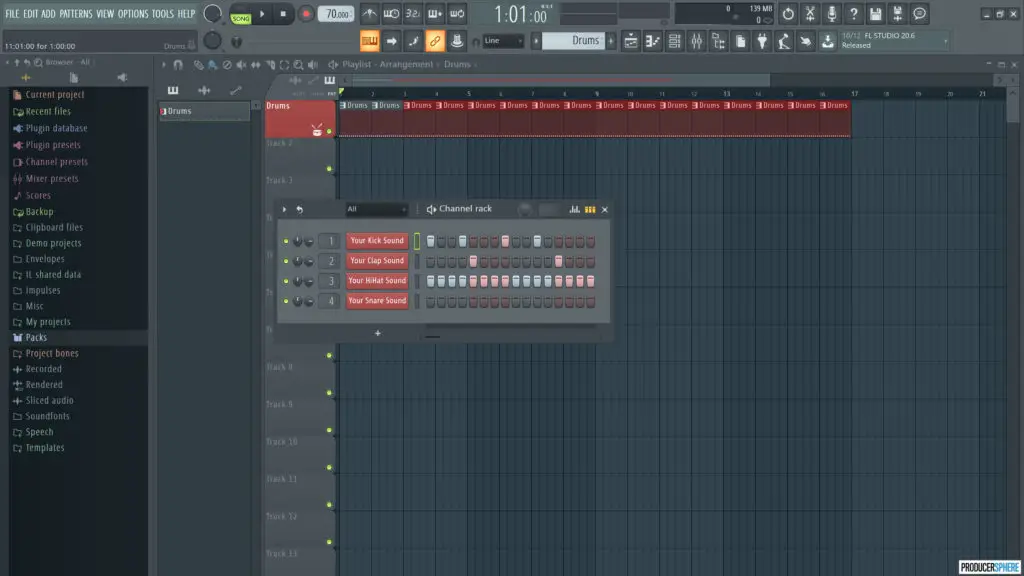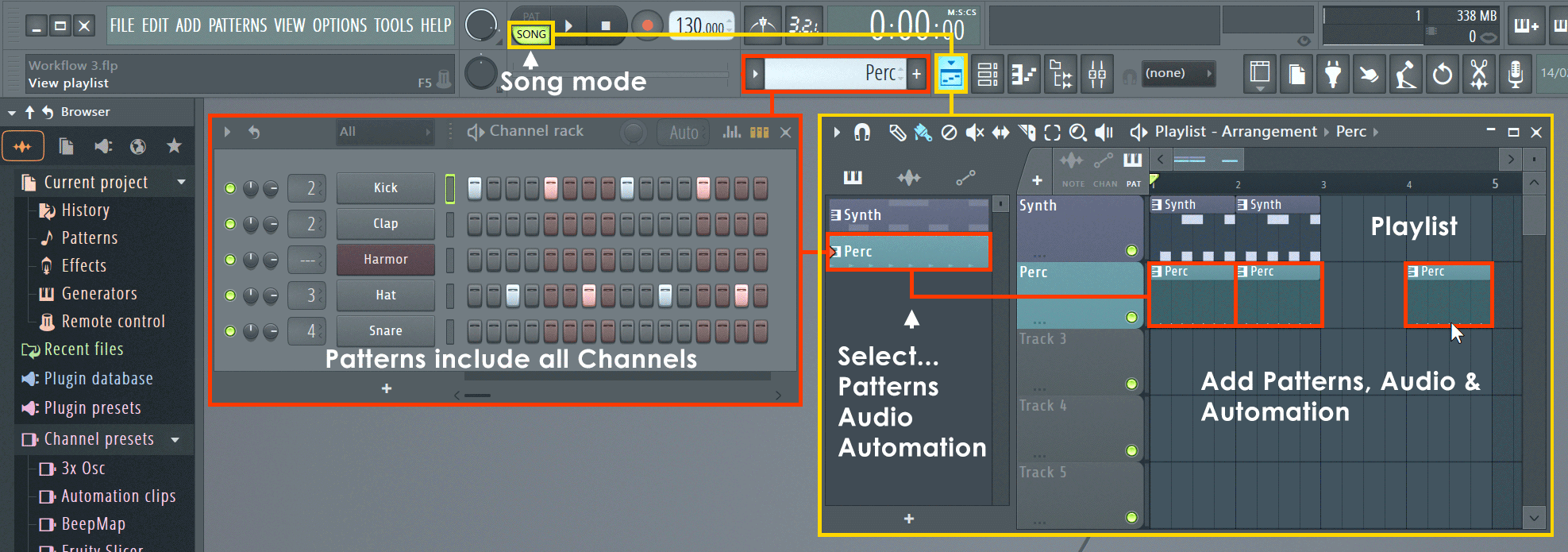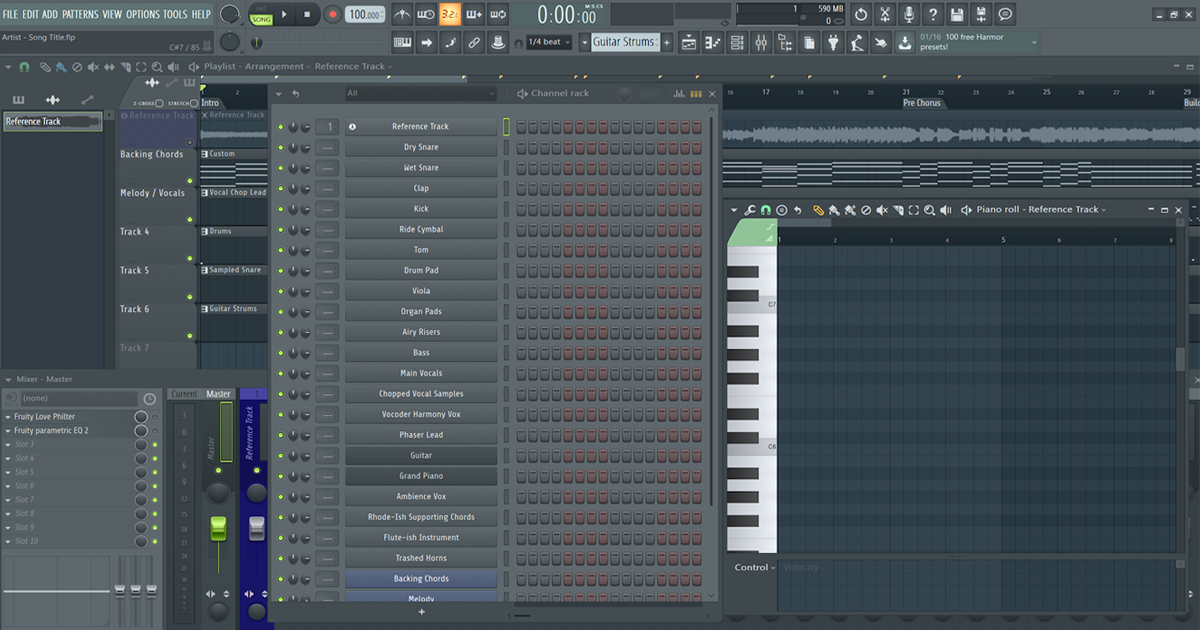

In the Step Sequencer above, I’ve programmed a drum loop from default samples that load when first opening FL Studio. 0% swing is applied when the swing slider is far left, and 100% swing is applied when the swing slider is far right. If we call the far left sixteenth note #1, the swing slider takes every programmed sample falling on even sixteenth notes (#2, #4, #6, #8, #10, #12, #14, #16) and moves them closer to their following odd sixteenth notes (#1, #3, #5, #7, #9, #11, #13, #15). In the Step Sequencer, each button or slot is a sixteenth note. It removes the unrealistic sounding mechanical perfection that can only be replicated by a computer. This swing slider gives the drums a more groovy, human feel.

On the Channel rack and Step Sequencer panel in FL Studio, you’ll see a slider at the top right labeled “swing” as shown below. In this tutorial, we’ll look at a quick use case for the feature when mixing house drums.

This is where using the FL Studio swing slider can come in handy. The imperfection of mankind makes some hits sound slightly off by just enough to make it sound better.


 0 kommentar(er)
0 kommentar(er)
